ASM Metals HandBook Vol. 17 - Nondestructive Evaluation and Quality Control
Подождите немного. Документ загружается.


signal increases, the bond is questionable. Where there is no back reflection at all from the inside surface of the liner
(babbitt), there is no bond.
Inspection of other types of bonded joints is often done in a manner similar to that described above for babbitted bearings.
An extensive discussion of the ultrasonic inspection of various types of adhesive-bonded joints (including two-component
lap joints, three component sandwich structures, and multiple-component laminated structures) is available in the article
"Adhesive-Bonded Joints" in this Volume. Additional information can be found in Ref 9 for the immersion inspection of
lap joints in Ref 10 for inspecting multiple-component laminated structures using resonance techniques. Reference 11
describes the ultrasonic inspection of a type of laminated structure of which one of the components of the structure was a
composite material; the inspection was able to detect flaws in the composite material as well as unbonded regions
between the components. Reference 12 deals with the inspection of bonded joints by LLW testing.
References cited in this section
9. E.A. Lloyd, Non-Destructive Testing of Bonded Joints--A Case for Testing Laminated Structures by Wide-
Band Ultrasound, Non-Destr. Test., Dec 1974, p 331-334
10.
P.J. Highmore, Non-Destructive Testing of Bonded Joints--The Depth Location of Non-Bonds in Multi-
Layered Media, Non-Destr. Test., Dec 1974, p 327-330
11.
W.E. Garland, P.O. Ritter, and J.K. Fee, Applications of Ultrasonic Inspection to Composite Materials, in
Proceedings of the 7th Symposium on Nondestructive Evaluation of Components
and Materials in
Aerospace and Nuclear Applications, Western Periodicals Company, 1969, p 226-238
12.
Y. Bar-Cohen and A. K. Mal, Ultrasonic NDE of Adhesive Bonding, in Ultrasonic Testing,
Vol 8, ASNT
Handbook, American Society for Nondestructive Testing, to be published
Ultrasonic Inspection
Revised by Yoseph Bar-Cohen, Douglas Aircraft Company, McDonnell Douglas Corporation; Ajit K. Mal, University of California, Los
Angeles; and the ASM Committee on Ultrasonic Inspection
*
Inspection of Bonded Joints
If the shape of a joint is favorable, ultrasonic inspection can be used to determine the soundness of joints bonded either
adhesively or by any of the various metallurgical methods, including brazing and soldering. Both pulse-echo and
resonance techniques have been used to evaluate bond quality in brazed joints.
A babbitted sleeve bearing is a typical part having a metallurgical bond that is ultrasonically inspected for flaws. The
bond between babbitt and backing shell is inspected with a straight-beam pulse-echo technique, using a contact-type
search unit applied to the outside of the steel shell. A small-diameter search unit is used to ensure adequate contact with
the shell through the couplant. Before inspection, the outside of the steel shell and the inside of the cast babbitt liner are
machined to a maximum surface roughness of 3.20 m (125 in.) (but the liner is not machined to final thickness).
During inspection, the oscilloscope screen normally shows three indications: the initial pulse, a small echo from the bond
line (due to differences in acoustical impedance of steel and babbitt), and the back reflection from the inside surface of the
liner. Regions where the bond line indication is minimum are assumed to have an acceptable bond. Where the bond line
signal increases, the bond is questionable. Where there is no back reflection at all from the inside surface of the liner
(babbitt), there is no bond.
Inspection of other types of bonded joints is often done in a manner similar to that described above for babbitted bearings.
An extensive discussion of the ultrasonic inspection of various types of adhesive-bonded joints (including two-component
lap joints, three component sandwich structures, and multiple-component laminated structures) is available in the article
"Adhesive-Bonded Joints" in this Volume. Additional information can be found in Ref 9 for the immersion inspection of
lap joints in Ref 10 for inspecting multiple-component laminated structures using resonance techniques. Reference 11
describes the ultrasonic inspection of a type of laminated structure of which one of the components of the structure was a

composite material; the inspection was able to detect flaws in the composite material as well as unbonded regions
between the components. Reference 12 deals with the inspection of bonded joints by LLW testing.
References cited in this section
9. E.A. Lloyd, Non-Destructive Testing of Bonded Joints--A Case for Testing Laminated Structures by Wide-
Band Ultrasound, Non-Destr. Test., Dec 1974, p 331-334
10.
P.J. Highmore, Non-Destructive Testing of Bonded Joints--The Depth Location of Non-Bonds in Multi-
Layered Media, Non-Destr. Test., Dec 1974, p 327-330
11.
W.E. Garla
nd, P.O. Ritter, and J.K. Fee, Applications of Ultrasonic Inspection to Composite Materials, in
Proceedings of the 7th Symposium on Nondestructive Evaluation of Components and Materials in
Aerospace and Nuclear Applications, Western Periodicals Company, 1969, p 226-238
12.
Y. Bar-Cohen and A. K. Mal, Ultrasonic NDE of Adhesive Bonding, in Ultrasonic Testing,
Vol 8, ASNT
Handbook, American Society for Nondestructive Testing, to be published
Ultrasonic Inspection
Revised by Yoseph Bar-Cohen, Douglas Aircraft Company, McDonnell Douglas Corporation; Ajit K. Mal, University of California, Los
Angeles; and the ASM Committee on Ultrasonic Inspection
*
Crack Monitoring
Laboratory and in-service monitoring of the initiation and propagation of cracks that are relatively slow growing (such as
fatigue cracks, stress-rupture cracks, and stress-corrosion cracks) has been accomplished with ultrasonic techniques. An
example of the ultrasonic detection of stress-rupture cracks resulting from creep in reformer-furnace headers is given in
the article "Boilers and Pressure Vessels" in this Volume. A relatively new and improved approach for monitoring the
growth of cracks is done with ultrasonic imaging techniques.
Monitoring of fatigue cracks in parts during laboratory tests and while in service in the field has been extensively
done using ultrasonic techniques. Reference 13 describes the use of surface waves to detect the initiation of cracks in
cylindrical compression-fatigue testpieces having a circumferential notch. The surface waves, which were produced by
four angle-beam search units on the circumference of each testpiece, were able to follow the contour of the notch and
detect the cracks at the notch root. Monitoring the crack-growth rate was accomplished by periodically removing the
cracked testpiece from the stressing rig and measuring the crack size by straight-beam, pulse-echo immersion inspection.
It was found necessary to break open some of the cracked testpieces (using impact at low temperature) and visually
measure the crack to establish an accurate calibration curve of indication height versus crack size.
The use of pulse-echo techniques for monitoring fatigue cracks in pressure vessels in laboratory tests is described in Ref
14. These techniques use several overlapping angle-beam (shear wave) search units, which are glued in place to ensure
reproducible results as fatigue testing proceeded.
The in-service monitoring of fatigue cracking of machine components is often accomplished without removing the
component from its assembly. For example, 150 mm (6 in.) diam, 8100 mm (320 in.) long shafts used in pressure rolls in
papermaking machinery developed fatigue cracks in their 500 mm (20 in.) long threaded end sections after long and
severe service. These cracks were detected and measured at 3-month intervals, using a contact-type straight-beam search
unit placed on the end of each shaft, without removing the shaft from the machine. When the cracks were found to cover
over 25% of the cross section of a shaft, the shaft was removed and replaced. In another case, fatigue cracking in a weld
joining components of the shell of a ball mill 4.3 m (14 ft) in diameter by 9.1 m (30 ft) long was monitored using contact-
type angle-beam search units. The testing was done at 3-month intervals until a crack was detected; then it was monitored
more frequently. When a crack reached a length of 150 mm (6 in.), milling was halted and the crack repaired.
References cited in this section

13.
C.E. Lautzenheiser, A.G. Pickett, A.R. Whiting, and A.W. Wilson, "Ultrasonic Studies of Fatigue Crack
Initiation and Propagation," Paper presented at the Spring Convention, Los Angeles, American Society for
Nondestructive Testing, Feb 1965
14.
C.E. Lautzenheiser, A.R. Whiting, and R.E. Wylie, Crack Evaluation and Growth During Low-
Cycle
Plastic Fatigue--Nondestructive Techniques for Detection, Mater. Eval., May 1966, p 241-248
Ultrasonic Inspection
Revised by Yoseph Bar-Cohen, Douglas Aircraft Company, McDonnell Douglas Corporation; Ajit K. Mal, University of California, Los
Angeles; and the ASM Committee on Ultrasonic Inspection
*
Dimension-Measurement Applications
Ultrasonic inspection methods can be used for measurement of metal thickness. These same methods can also be used to
monitor the deterioration of a surface and subsequent thinning of a part due to wear or corrosion and to determine the
position of a solid object or liquid material in a closed metallic cavity.
Thickness measurements are made using pulse-echo techniques. Resonance techniques were also used in the past,
but have become obsolete. The results can be read on an oscilloscope screen or on a meter, or they can be printed out.
Also, the same data signals can be fed through gates to operate sorting or marking devices or to sound alarms. Resonance
thickness testing was most often applied to process control inspection where opposite sides of the testpieces are smooth
and parallel, such as in the inspection of hollow extrusions, drawn tubes, tube bends, flat sheet and plate, or electroplated
parts.
The maximum frequency that can be used for the test determines the minimum thickness that can be measured. The
maximum thickness that can be measured depends on such test conditions as couplant characteristics, test frequency, and
instrument design and on material type, metallurgical condition, and surface roughness.
Pulse-echo thickness gages with a digital readout (Fig. 59) are widely used for thickness measurement. Pulse-echo testing
can measure such great thickness that it can determine the length of a steel reinforcing rod in a concrete structure,
provided one end of the rod is accessible for contact by the search unit. Although pulse-echo testing is capable of
measuring considerable thicknesses, near-field effects make the use of pulse-echo testing ineffective on very thin
materials.
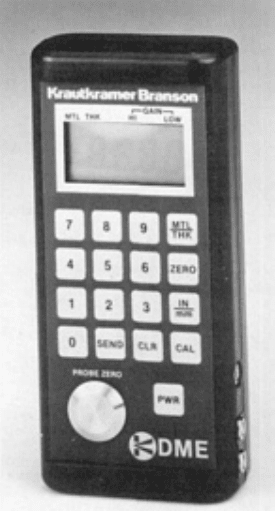
Fig. 59 Hand-held ultrasonic thickness gage
Position measurements of solid parts or liquid materials in closed metallic cavities are usually made with pulse-
echo-type equipment. One technique is to look for changes in back reflection intensity as the position of the search unit is
changed. In one variation of this technique, the oil level in differential housings was checked to see if the automated
equipment used to put the oil in the housing on an-assembly line had malfunctioned. The test developed for this
application utilized a dual-gated pulse-echo system that employed a 1.6-MHz immersion-type search unit with a thin, oil-
filled rubber gland over its face. The search unit was automatically placed against the outside surface of the housing just
below the proper oil level, as shown in Fig. 60(a). With oil at the correct level, sufficient beam energy was transmitted
across the boundary between the housing wall and the oil to attenuate the reflected beam so that multiple back reflections
were all contained in the first gate (Fig. 60b). The lack of oil at the correct level allowed the multiple back reflections to
spill over into the second gate (Fig. 60c). Thus, the test was a fail-safe test that signaled "no test" (no signal in the first
gate), "go" (signals in the first gate only), and "no go" (signals in both gates).
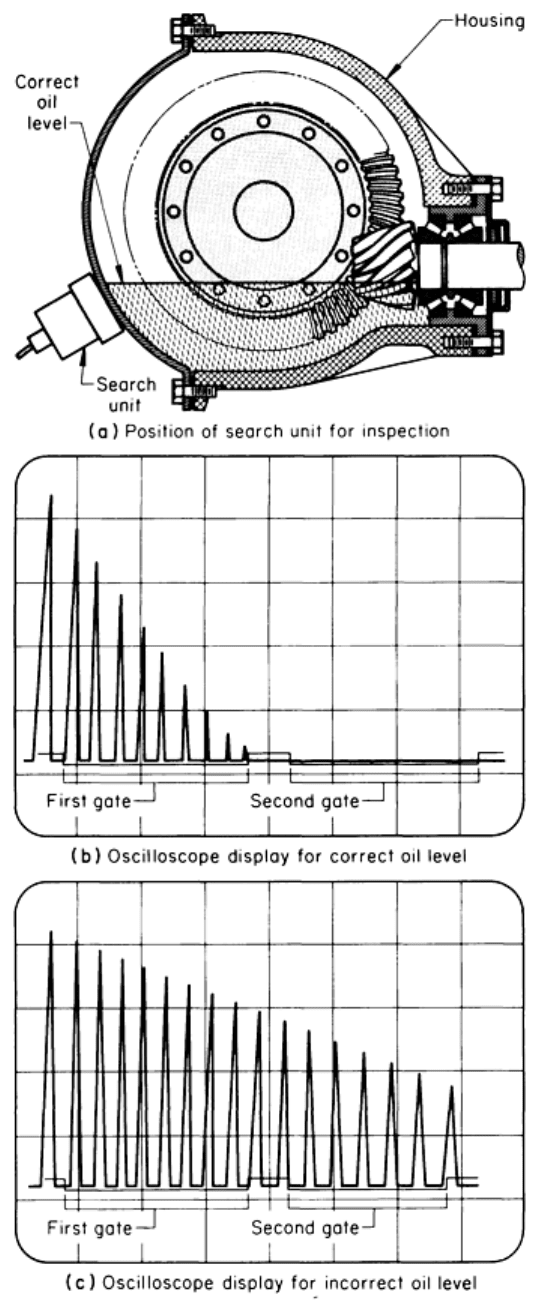
Fig. 60
Method of determining correct oil level in on automobile differential housing by use of an ultrasonic
pulse-echo system. See text.
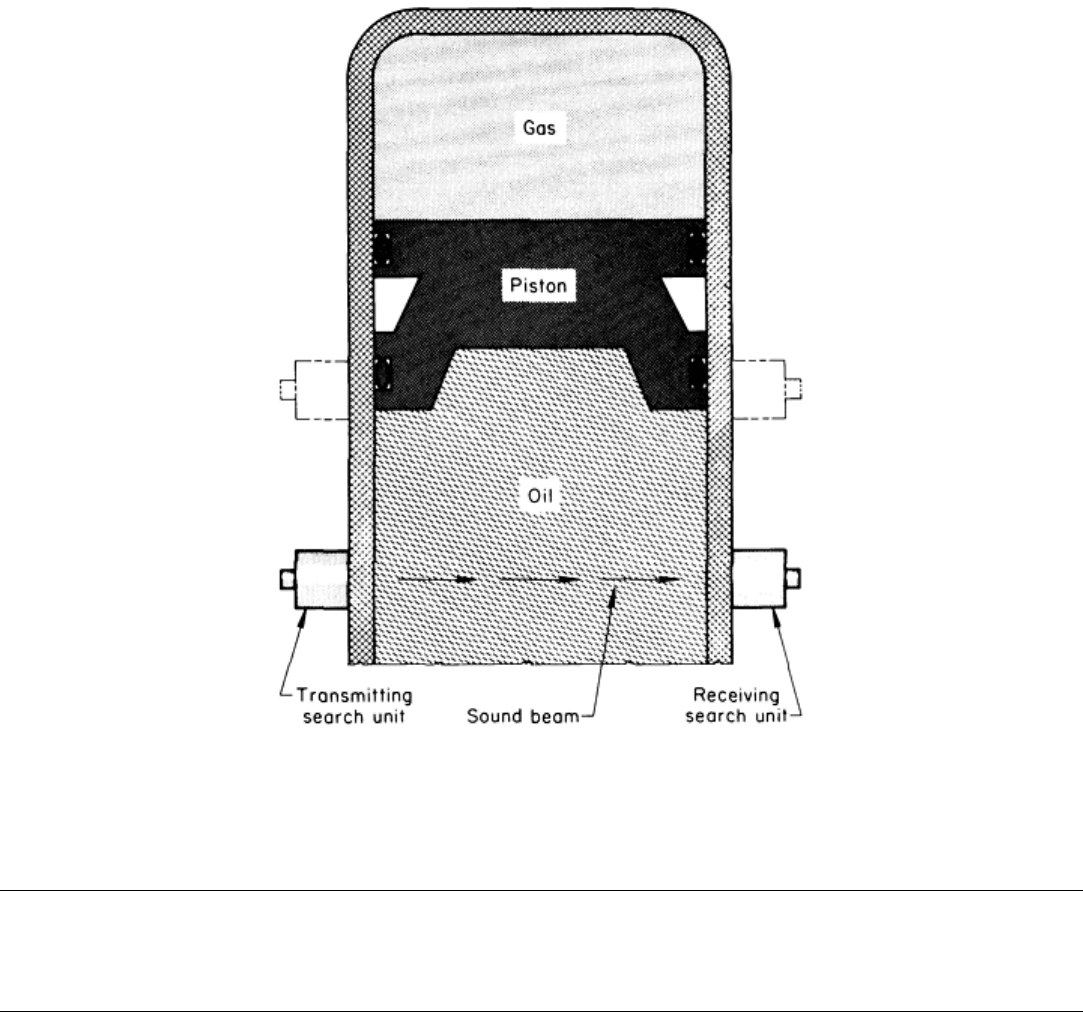
In another position measurement system, a set of two contact-type 4-MHz search units was utilized in a through
transmission pitch-catch arrangement to determine the movement of a piston in a hydraulic oil accumulator as both
precharge nitrogen-gas pressure and standby oil pressure varied (Fig. 61). The two search units were placed 180° apart on
the outside surface of the accumulator wall at a position on the oil side of the piston, as shown in Fig. 61. When a high-
energy pulse was sent from the transmitting unit, the beam was able to travel straight through the oil, and a strong signal
was picked up by the receiving unit. However, as the search units were moved toward the piston (see locations drawn in
phantom in Fig. 61), the sloping sides of the recess in the piston bottom deflected the beam so that very little signal was
detected by the receiving unit.
Fig. 61
Setup for determining the position of a piston in a hydraulic oil accumulator by use of two contact
search units utilizing a through transmission arrangement
Ultrasonic Inspection
Revised by Yoseph Bar-Cohen, Douglas Aircraft Company, McDonnell Douglas Corporation; Ajit K. Mal, University of California, Los
Angeles; and the ASM Committee on Ultrasonic Inspection
*
Determination of Microstructural Differences
Ultrasonic methods can be used to determine microstructural differences in metals. For this, contact testing with the
pulse-echo technique is used. The testing can be either the measurement of ultrasonic attenuation or the measurement of
bulk sound velocity.
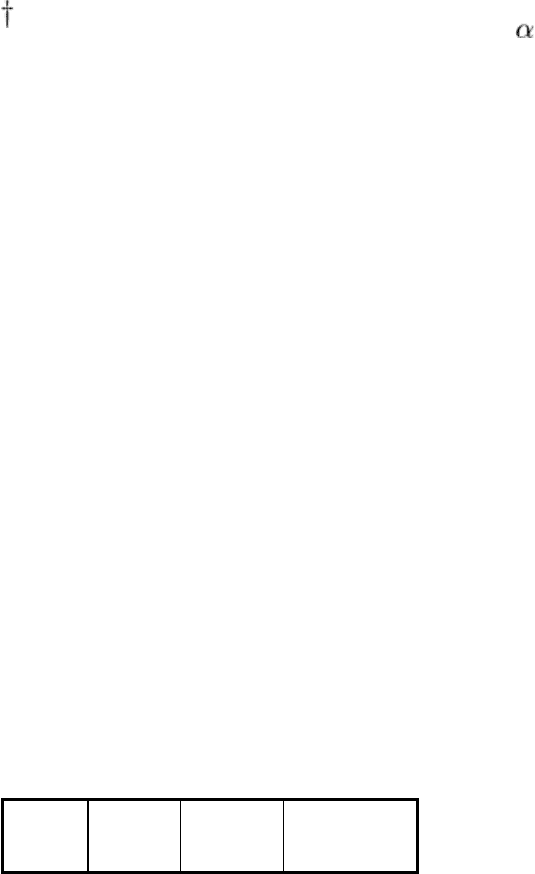
The attenuation method is based on the decay of multiple echoes from testpiece surfaces. Once a standard is
established, other testpieces can be compared to it by comparing the decay of these echoes to an exponential curve. This
test is especially suited for the microstructural control of production parts, in which all that is necessary is to determine
whether or not the parts conform to a standard.
An example of the use of ultrasonic attenuation in the determination of differences in microstructure is the control of
graphite-flake size in gray iron castings, which in turn controls tensile strength. In one application, a water-column search
unit that produced a pulsed beam with a frequency of 2.25 MHz was used to test each casting across an area of the casting
wall having uniform thickness and parallel front and back surfaces. A test program had been first carried out to determine
the maximum size of graphite flakes that could be permitted in the casting and still maintain a minimum tensile strength
of 200 MPa (30 ksi). Then, ultrasonic tests were made on sample castings to determine to what intensity level the second
back reflection was lowered by the attenuation effects of graphite flakes larger than permitted. Next, a gate was set on the
ultrasonic instrument in the region of the second back reflection, and an alarm was set to signal whenever the intensity of
this reflection was below the allowable level. The testing equipment was then integrated into an automatic loading
conveyor, where the castings were 100% inspected and passed or rejected before any machining operation.
Velocity Measurements. When considering the compressional and shear wave velocities given in Table 1, there may
be small deviations for crystalline materials because of elastic anisotropy. This is important and particularly evident in
copper, brass, and austenitic steels. The following example illustrates the variation of sound velocity with changes in the
microstructure of leaded free-cutting brass.
Example 3: Measuring the Bulk Sound Velocity in Leaded Free-Cutting Brass.
Leaded free-cutting brass has a matrix microstructure of phase with a dispersion of lead particles. Beta-phase stringers
may also be present. The lead distribution varies in different heat lots from a total random distribution to confinement at
grain boundaries.
This example shows a relationship correlating the sound velocity characteristic to the type of lead distribution in the brass.
Two grades of leaded brass are considered: UNS C35300 and C36000. Both alloys are similar in chemical composition,
mechanical properties, and sound velocity characteristics.
Four samples with flat parallel surfaces were prepared from 21 mm (0.83 in.) diam bar stock. These cylindrical samples
were 17 mm (0.67 in.) in thickness (height). A similar-size velocity standard made from C36000 leaded brass was
available. This standard test block had been measured for ultrasound transmission by the National Bureau of Standards
(NBS).
The determination of sound velocity involves the measurement of sample thickness and the measurement of transit times
with an A-scan display of ultrasonic echoes. The thickness of the samples and the velocity standard block are measured to
an accuracy of ±0.02 mm (±0.001 in.), and the A-scan display provides the relative time or distance between the
interfacial and back echoes for the samples and the velocity standard. If the time sweep on the A-scan display is not
accurately calibrated, the velocity standard provides the reference for comparing the relative transit times of the A-scan
data. The bulk sound velocity of the samples can then be determined by comparing the A-scan spacing (transit times) of
echoes in the sample to the echo spacing in the velocity standard. Further details on the measurement of ultrasonic
velocity are available in ASTM E 494-75.
With this general procedure, the back-echo distances on the A-scan oscilloscope display were measured using the
electronic gate function control. The frequency used was 10 MHz, with a 75 mm (3 in.) focus transducer. The back-echo
spacing on the A-scan display was recorded, and bulk sound velocities calculated. The sound velocity values are listed
below:
Identity
Material
Condition
Velocity
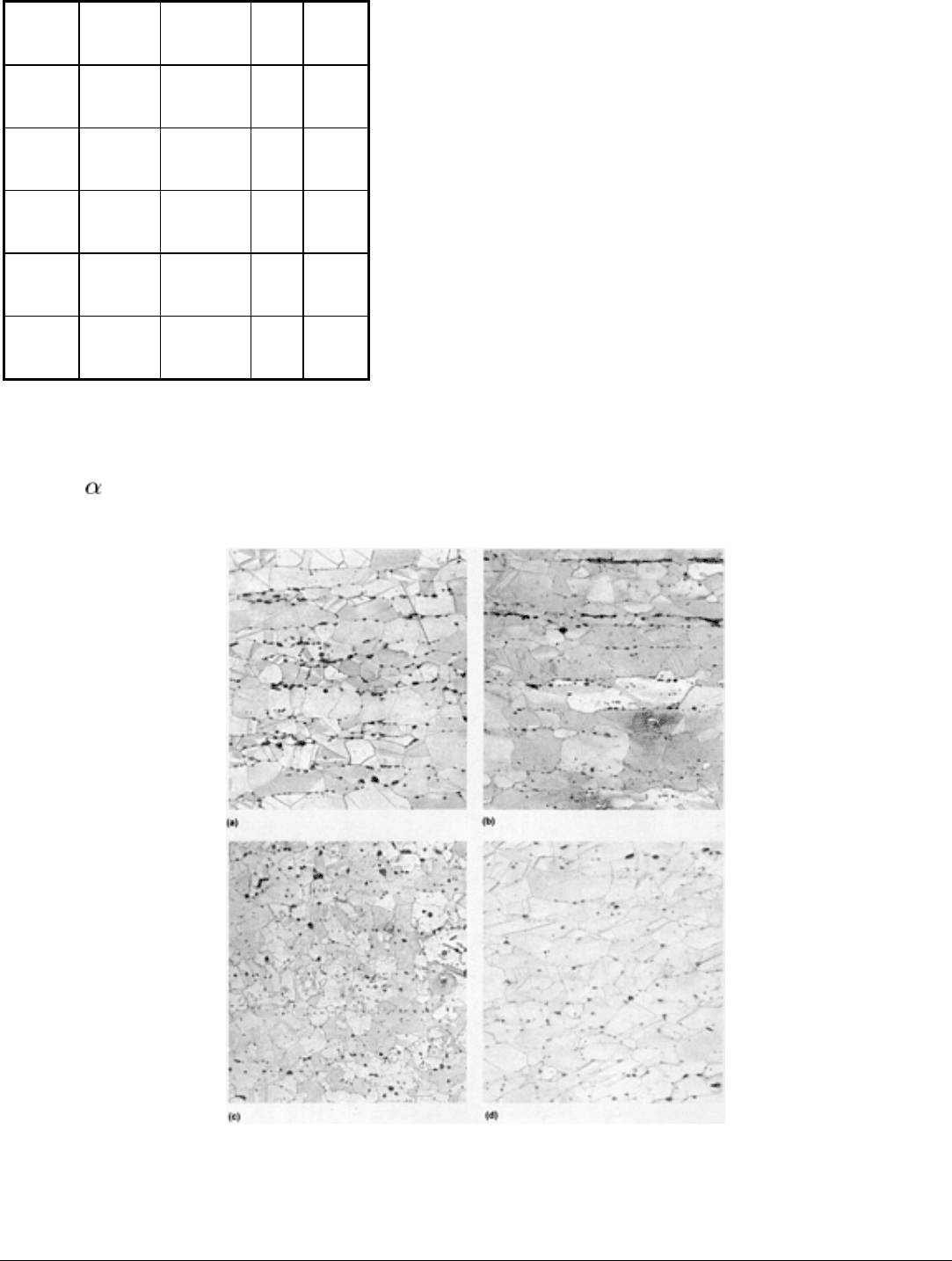
m/s
ft/s
NBS C36000 Half hard 4149
13,610
A C36000 Half hard 3839
12,600
B C35300 Half hard 4136
13,570
C C35300 Annealed 4454
14,610
D C35300 Half hard
4381
14,370
Photomicrographs of samples A, B, C, and D in Fig. 62 show the matrix microstructures and lead distributions. In Fig.
62(a) and 62(b), the dark lead particles are distributed primarily at grain boundaries. These two samples also have lower
bulk sound velocity transmission characteristics. Samples C and D have a significantly more random lead distribution
within the -phase grains and higher sound velocity transmission values.
Fig. 62 Photomicrographs of samples tested in Example 3
. (a) Sample A. (b) Sample B. (c) Sample C. (d)
Sample D. Etched with NH
4
OH plus H
2
O
2
. All 200×
Note cited in this section

This example was provided by James J. Snyder, Westinghouse Electric Corporation, Oceanic Division.
Ultrasonic Inspection
Revised by Yoseph Bar-Cohen, Douglas Aircraft Company, McDonnell Douglas Corporation; Ajit K. Mal, University of California, Los
Angeles; and the ASM Committee on Ultrasonic Inspection
*
Corrosion Monitoring
Ultrasonic inspection can be used for the in situ monitoring of corrosion by measuring the thickness of vessel walls with
ultrasonic thickness gages. The advantage of this method is that internal corrosion of a vessel can be monitored without
penetration.
There are, however, some disadvantages. Serious problems may exist in equipment that has a metallurgically bonded
internal lining, because it is not obvious from which surface the returning signal will originate. A poor surface finish,
paint, or a vessel at high or low temperature may also complicate the use of contact piezoelectric transducers (although
this difficulty might be addressed by noncontact in situ inspection with an EMA transducer).
Despite these drawbacks, ultrasonic thickness measurements are widely used to determine corrosion rates. To obtain a
corrosion rate, a series of thickness measurements is made over an interval of time, and the metal loss per unit time is
determined from the measurement samples. Hand-held ultrasonic thickness gages are suitable for these measurements and
are relatively easy to use. However, depending on the type of transducer used, the ultrasonic thickness method can
overestimate metal thicknesses when the remaining thickness is under approximately 1.3 mm (0.05 in.).
Another corrosion inspection method consists of monitoring back-surface roughness with ultrasonic techniques. The
following example describes an application of this method in the monitoring of nuclear waste containers.
Example 4: Ultrasonic Examination of Nuclear Waste Containers to Detect
Corrosion.
Before low-level transuranic waste containers are transferred from interim storage (up to 20 years) to long-term storage,
the containers are inspected for corrosion. Previously, the most commonly used procedure was visual examination of
waste drum external surfaces and a few trial contact ultrasonic thickness measurements. However, visual examination
detects only external damage, and sampling with contact ultrasonic thickness readings does not detect subtle changes
resulting from minor internal corrosion. Also, the large number of drums to be examined means that manual examination
is not compatible with the goal of keeping personnel radiation exposure as low as reasonably achievable.
An automated ultrasonic inspection was developed for monitoring the corrosion in 210 L (55 gal.) nuclear waste
containers (carbon steel drums with a nominal wall thickness of 1.4 mm, or 0.055 in.). An initial evaluation was made of
both ultrasonic and eddy current methods for assessing container integrity. Potential problems with obtaining the required
depth of penetration with eddy currents and the permeability variation in drums resulted in selection of the ultrasonic
method.
The ultrasonic system consisted of an eight-channel multiplexed ultrasonic instrument, a drum rotation fixture, bubbler-
type search-unit holders, CRT display, strip chart recorder, analog and digital recording, and digital data processing (Ref
15). Eight locations were scanned during drum rotation, and data were taken every 1 mm (0.04 in.) around the
circumference as the drum rotated. The search units (10-MHz focused transducers) were designed to tolerate an angle
change of ±5° and had a maximum beam size of 1.3 mm (0.050 in.) at the focal point to provide for measurements over
rough surfaces. The system was able to measure the thickness of steel in the range of 0.5 to 3 mm (0.020 to 0.120 in.).
Figure 63 shows indications from corroded and uncorroded areas. This illustrates the ability of the system to detect back-
surface roughness due to corrosion buildup. Correlation with metallography shows that the system can detect oxide
buildup of 250 m (10 mils) and more, as well as deterioration as small as 25 m (1.0 mil).
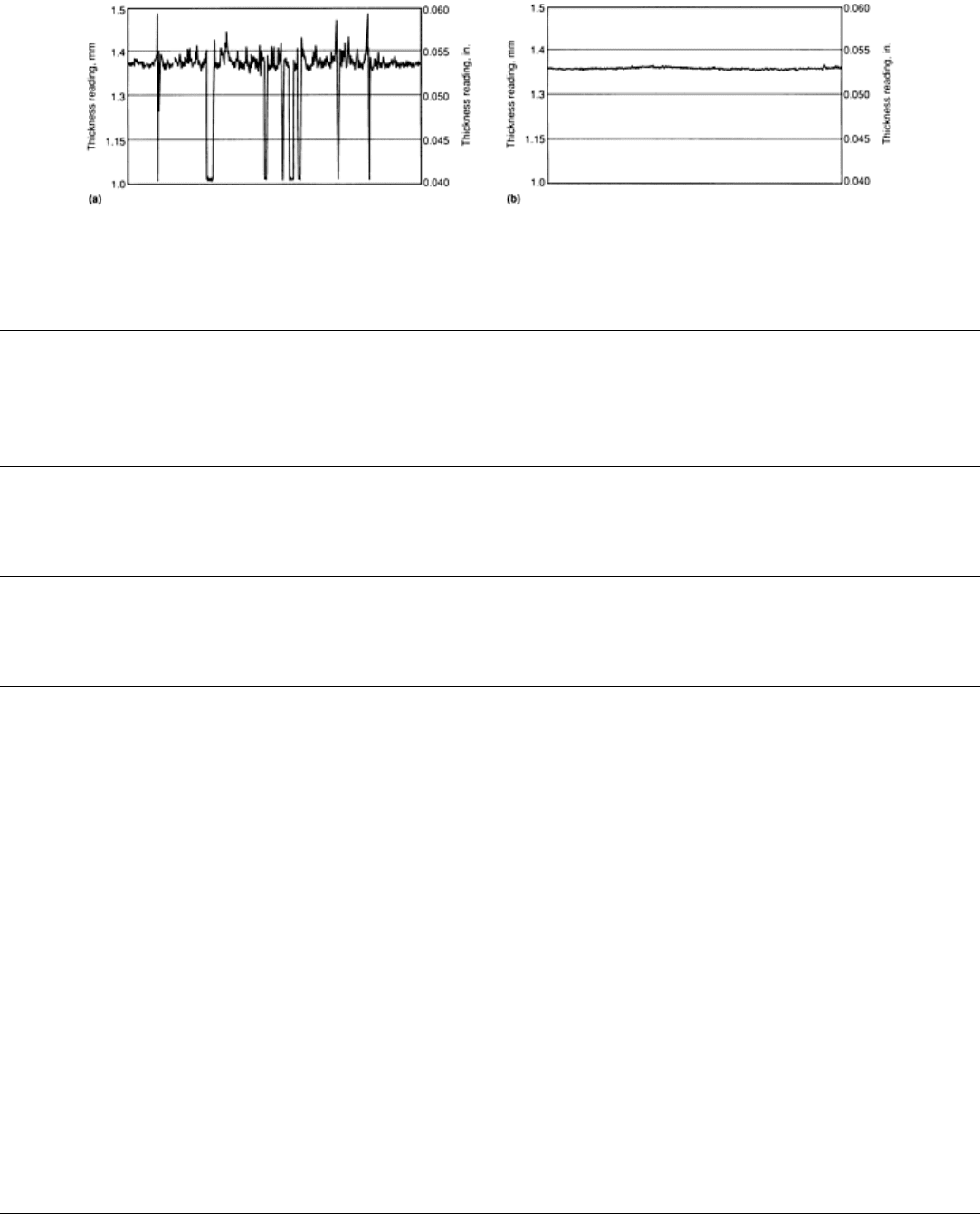
Fig. 63 Variations in ultrasonic indications from (a) corroded and (b) uncorroded areas
Reference cited in this section
15.
J.F. Cook, D.A. Aldri
ch, B.C. Anderson, and V.S. Scown, Development of an Automated Ultrasonic
Inspection System for Verifying Waste Container Integrity, Mater. Eval., Dec 1984
Note cited in this section
This example was provided by J.F. Cook and D.A. Aldrich, Idaho National Engineering Laboratory.
Ultrasonic Inspection
Revised by Yoseph Bar-Cohen, Douglas Aircraft Company, McDonnell Douglas Corporation; Ajit K. Mal, University of California, Los
Angeles; and the ASM Committee on Ultrasonic Inspection
*
Stress Measurements
With ultrasonic techniques, the velocity of ultrasonic waves in materials can be measured and related to stress (Ref 16).
These techniques rely on the small velocity changes caused by the presence of stress, which is known as an acoustoelastic
effect. The technique is difficult to apply because of the very small changes in velocity with changes in stress and because
of the difficulty in distinguishing stress effects from material variations (such as texture; see Ref 17). However, with the
increased ability to time the arrival of ultrasonic pulses accurately (±1 ns), the technique has become feasible for a few
practical applications, such as the measurement of axial loads in steel bolts and the measurement of residual stress (Ref
5).
The real limitation of this technique is that in many materials the ultrasonic pulse becomes distorted, which can reduce the
accuracy of the measurement. One way to avoid this problem is to measure the phase difference between two-tone bursts
by changing the frequency to keep the phase difference constant (Ref 5). Small specimens are used in a water bath, and
the pulses received from the front and back surfaces overlap.
The presence of stress also rotates the plane of polarization of polarized shear waves, and there is some correlation
between the angle of rotation and the magnitude of the stress. Measurement of this rotation can be used to measure the
internal stress averaged over the volume of material traversed by the ultrasonic beam.
References cited in this section
5. R. Halmshaw, Nondestructive Testing, Edward Arnold, 1987, p 198, 143, 211
16.
Y.H. Pao, W. Sachse, and H. Fukuoka, Acoustoelasticity and Ultrasonic Measurement of Residual Stresses,
